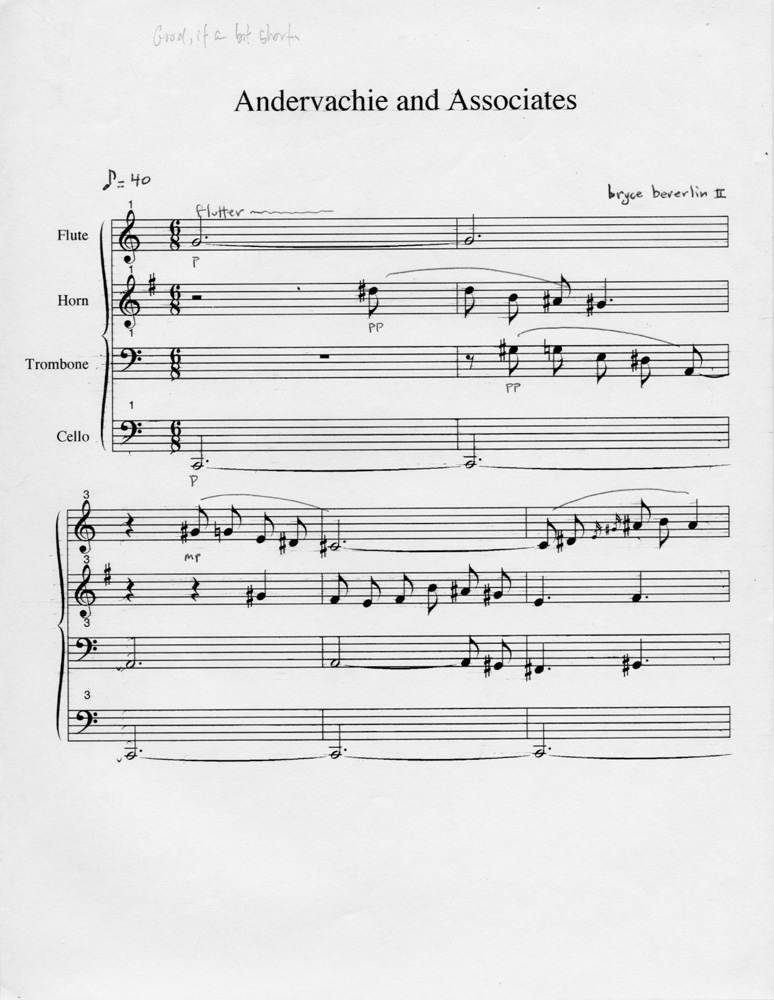

Altogether a more experimental and diverse piece of music from the time of Rag. There is more than a sprinkling of humour in the performance and the Rag itself. More colourful and complex harmonies blend with crunched melody lines. The familiar Rag rhythms litter the piece but there are also aspects of the later boogie-woogie style alongside traits of Jelly Roll Morton. The Rag was composed in 1899 and seems to have a huge variety of styles within it. This is one of the most fascinating of the Rags in this selection and accompanied by a performance from the actual composer. Charleston Rag by Eubie Blake (1887-1983)
#FAMILIAR FAMOUS MUSIC COMPOSITIONS SERIES#
It was made even more famous when it was used as the theme music for the UK television snooker series called “Pot Black”.ħ. Botsford composed music both in the Ragtime style and other musical genres but this Rag is considered to be his best-loved. Botsford received a formal musical education and this appears to give his music a slightly less flexible and relaxed feel. This Rag was published in 1908 and highlights Botsford able grasp of the Rag style. Black & White Rag by George Botsford (1874-1949)īorn in South Dakota George Botsford was a key performer and composer of Ragtime music. This Rag is also amongst one of the most arranged and performed pieces of its genre, and of Jelly Roll’s substantial output.Ħ. Listen for the forearm smashes later in the Rag.

He is harmonically and melodically daring in this Rag, breaking many of the expectations of the form. Morton has many tricks up his compositional sleeve and Tiger Rag is no exception, although he is not the only composer who claimed to have written the piece. His music offers us a refreshingly adventurous voice in the world of both Jazz and Ragtime music. Like many pianists of his time, Jelly Roll Morton made his living early in his career as a pianist in a brothel. Tiger Rag by Jelly Roll Morton (1890-1941) He favoured sequential patterns for development and certainly shows himself to be an equal to Joplin both as pianist and composer.ĥ. Rhythmically, Lamb becomes increasingly experimental and also explores a greater variation in phrasing patterns in the melody. Lamb was well aware of the music of Joplin and even though his earlier Rags pay close homage to Joplin’s works, these later Rags demonstrate a new approach to Rag composition and a unique voice. This Rag was composed in 1916 and is considered by many to be amongst his finest. Top Liner Rag by Joseph Lamb (1887-1960)īorn in 1887 in Montclair, New Jersey, Lamb became one of the most noteworthy Rag composers of his time. It is also in the slightly more approachable key of F major as opposed to the Maple Leaf Rag in Ab major.Ĥ. Structurally, the Rag falls into the familiar AA-BB-A-CC-DD with the exception of the final section that presents new material. Harmonically it uses some of the subtle chromatic tricks of the Maple Leaf Rag that add a gentle spice to the otherwise traditional chordal patterns. This is particularly because of the bass line which acts as a counter-melody to the fast flowing tune above. In this Rag, I feel the presence of the Marching Bands more clearly than in other works by Joplin. It has been referred to an archetypal Rag meaning that it set the tone and structure for most Rags that followed.
#FAMILIAR FAMOUS MUSIC COMPOSITIONS FULL#
It’s a wonderful display of how Joplin played, I would suggest, and makes full use of the colours and range of the piano. There is no introduction to the piece like The Entertainer, but an upbeat from the bass and we are plunged into the melody. This was probably the first Rag Joplin published and one that has enjoyed many years in the spotlight. Joplin himself made his living as a piano teacher and composer, dying tragically at the age of forty-eight.Įven though the Entertainer has become the winner of best-known Rag, it was The Maple Leaf Rag that assured Joplin his reputation. The light-hearted nature of the music and compelling tune has made this rag amongst the favourite of all Joplin’s oeuvre. This is not a simple piece to play as like most Rags, uses a stride, a left-hand piano technique the effectively adds both bass line and chords to the melody. The piece enjoyed a resurrection in the 1970’s when it was brilliantly used in the film titled “The Sting”. It was written around 1902 and gained steadily in popularity. This is doubtless the most famous piece of Ragtime music ever composed. The Entertainer by Scott Joplin (1868-1917)


 0 kommentar(er)
0 kommentar(er)
